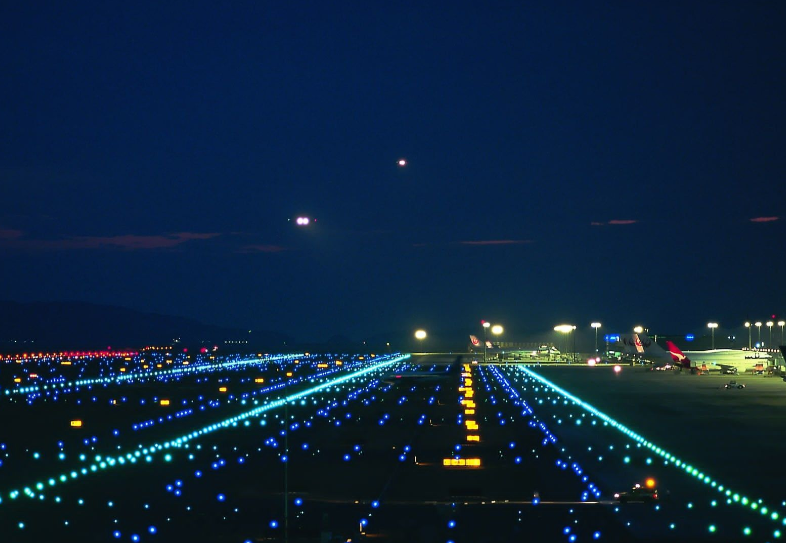When safely guiding aircraft during takeoff, landing, and taxiing, the airfield lighting system plays a crucial role. The intricate network of lights across an airfield provides pilots with the necessary visual cues for navigating the runways and taxiways, particularly during low visibility conditions like night or fog.
The Components of an Airfield Lighting System
They are made up of various types of lights, each with a specific function. Runway edge lights delineate the boundaries of the runways and are usually white, but can change to yellow to signal the runway’s end. Similarly, taxiway lights outline the paths planes should follow when taxiing. These are typically blue, distinguishing them from runway lights.
Approach lighting systems (ALS) are complex arrays of lights located at the approach end of the runway. They extend out from the runway end and provide pilots with vital information about the runway alignment and their descent angle during landing.
Obstruction lights are another critical component, warning pilots of potential hazards such as buildings or towers that might penetrate navigable airspace. These lights are often red and can be found on or near the obstruction.
Importance of Maintenance and Upgrades
Maintenance is essential to ensure the safety and efficiency of an airfield’s operation. An example of critical upkeep is the airfield lighting cable replacement, a task that involves removing and electrical systemsthat power the lighting fixtures. Given the importance of lighting for navigation, it’s vital that these cables are in top condition and replaced whenever they show signs of wear and tear.
Routine inspections and testing are also integral to an airfield’s maintenance protocol. Technicians need to regularly check lighting fixtures for damage, make necessary repairs, and ensure that all lights are functioning correctly. It’s not just about keeping the lights on; it’s about maintaining a high standard of visibility and safety for all airfield users.
The Role of LED Technology
In recent years, LED technology has revolutionized airfield lighting. LEDs are more energy-efficient, have a longer lifespan, and require less maintenance than traditional incandescent bulbs. The transition to LED lights is a significant step towards more sustainable and cost-effective airfield operations.
Conclusion
In conclusion, the airfield lighting system is a technologically advanced and essential component of modern aviation. It encompasses a variety of light fixtures, each serving a unique purpose in aiding aircraft during takeoff, landing, and taxiing. The proper functioning of these systems is imperative for the safety of air traffic. With technological advancements like LED and a robust maintenance regimen, including timely airfield lighting cable replacement, these systems will continue to be an indispensable part of the aviation industry.


